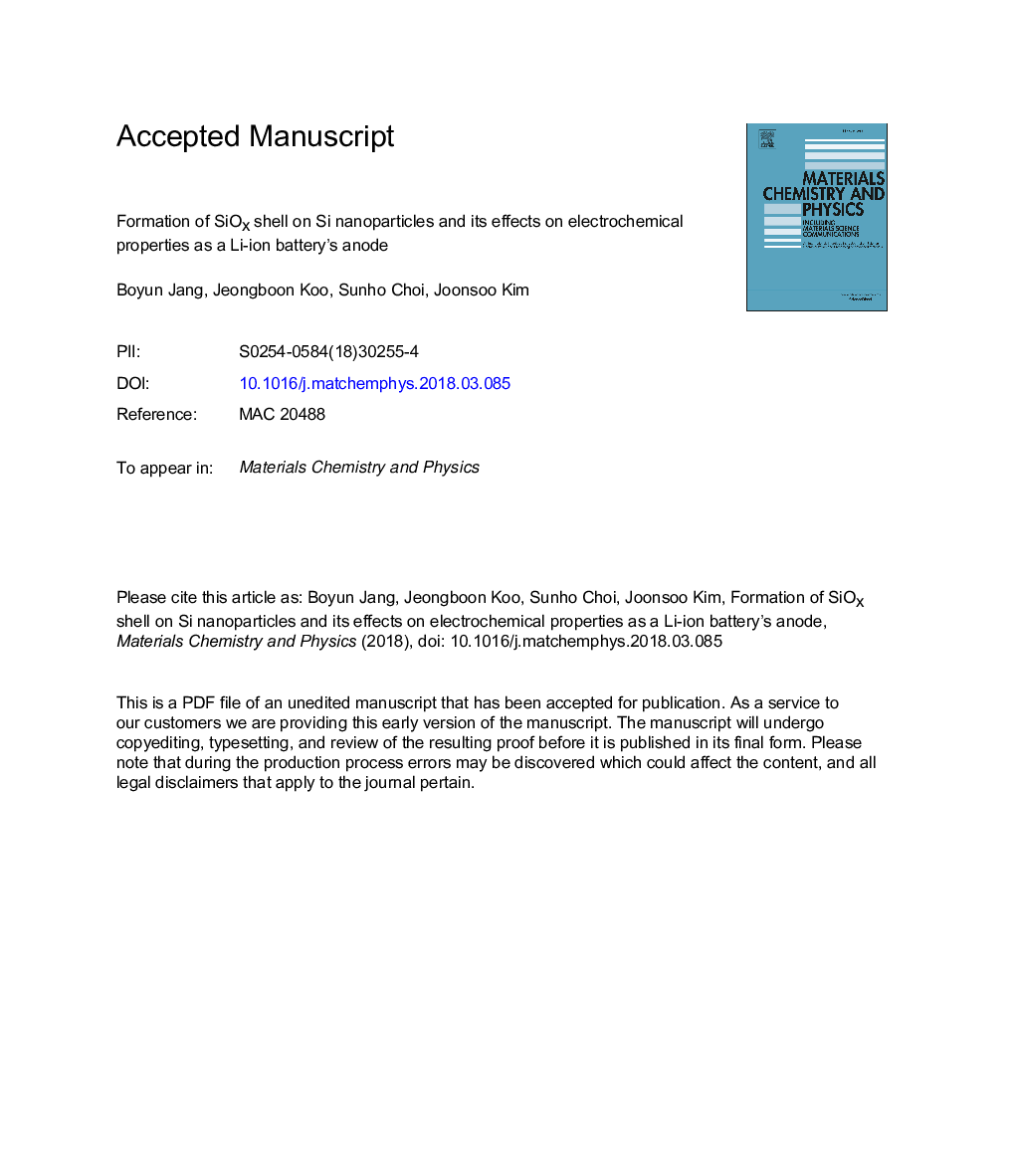| Article ID | Journal | Published Year | Pages | File Type |
|---|---|---|---|---|
| 7921317 | Materials Chemistry and Physics | 2018 | 25 Pages |
Abstract
Crystalline Si core-amorphous SiOx shell nanoparticles were synthesized from SiCl4 using an atmospheric microwave plasma process and their microstructures were investigated. It was found that the amorphous SiOx shell thickness was determined by varying the applied microwave power. The increase of applied power directly increased the length of the flame at the end of the plasma. Through observation of the microstructures with varying lengths of the flame, it was found that a highly crystalline Si phase was formed in the plasma and amorphous SiOx phase was formed in the flame. The longer flame resulted in the thicker SiOx shell around the Si core. The electrochemical properties of the varying SiOx shell thicknesses were also investigated in that the synthesized Si-SiOx nanoparticles were used as anode materials in a lithium-ion battery (LIB). Thin shells such as native oxide did not influence the electrochemical behaviour of the Si core, whilst some shells were too thick to allow Li-ions to react with the Si core. Using Si-SiOx nanoparticles with the optimum SiOx:Si ratio of 18:82, the following electrochemical properties were obtained: a first reversible capacity of 932 mAh/g, an initial columbic efficiency (ICE) of 52.5%, and a capacity retention of 83.7% at the 100th cycle.
Related Topics
Physical Sciences and Engineering
Materials Science
Electronic, Optical and Magnetic Materials
Authors
Boyun Jang, Jeongboon Koo, Sunho Choi, Joonsoo Kim,
